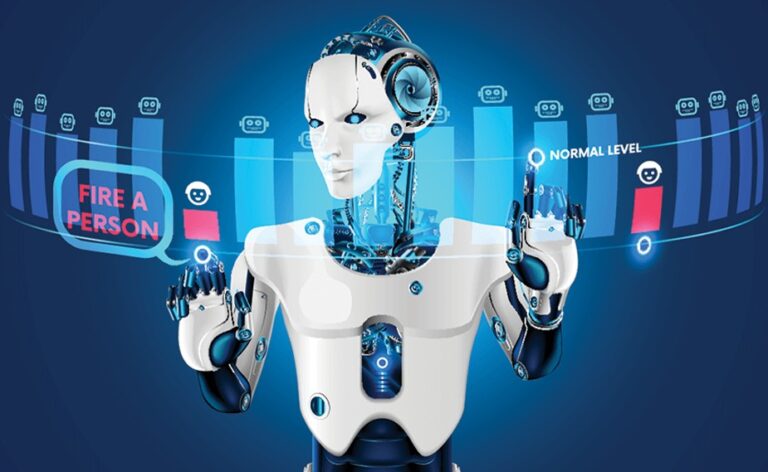Imagine a bustling city at dawn — lights flickering on in factories, kitchens, offices, and call centres. Now picture that city ten years later, where machines hum softly, algorithms handle payrolls, and robots serve coffee. The streets are quieter, not because productivity has dropped, but because work itself has changed hands. This isn’t science fiction; it’s the unfolding reality of automation and artificial intelligence reshaping labour across industries. The debate isn’t merely about jobs lost, but about how economies, policies, and people adapt when machines start taking the morning shift.
The Economic Chessboard of Automation
Automation behaves like a silent chess player — one who doesn’t boast but always plans several moves. Economists model this transition using labour substitution frameworks, where machines act as capital that replaces repetitive human tasks. Initially, this seems efficient: productivity rises, costs fall, and profits surge. But as the algorithm advances across the board, a counter-move emerges — wage compression and unemployment in low-skill sectors.
Manufacturing was the first pawn to fall, followed by logistics and retail. Yet, even high-skilled professions like finance and law are beginning to feel the tremors. Economic models show that while automation increases output, it can widen inequality unless balanced by investments in retraining and education. Institutions offering upskilling — like those providing an AI course in Kolkata — are becoming essential for workers seeking relevance in a machine-augmented economy.
The Labour Market’s Great Rearrangement
In the age of automation, the labour market resembles a puzzle being reassembled with pieces that no longer fit as they once did. Some sectors, such as healthcare and creative industries, gain new shapes — assisted by AI rather than replaced by it. Meanwhile, others like transportation and manufacturing face shrinkage as driverless vehicles and robotic assemblers take over.
Economic projections suggest that for every routine job displaced, new roles may emerge in data management, AI ethics, and digital maintenance. However, this regeneration isn’t automatic. The transition requires deliberate policy design — tax incentives for reskilling, protection for gig workers, and adaptive safety nets. The challenge isn’t the speed of technology but the lag of governance. Without intervention, nations may see polarised labour markets, where elite technologists flourish while others are left behind.
Modelling Displacement and Growth
Economists simulate the impact of AI using general equilibrium models that account for labour substitution, capital accumulation, and productivity shocks. These models often show a paradox: automation can both reduce employment in the short term and stimulate growth in the long term. The key variable is adaptability.
If governments invest in education reform, small business innovation, and digital infrastructure, displaced workers can migrate into newly created sectors. But if these investments stall, automation amplifies inequality instead of prosperity. Consider the service industry, where chatbots now handle customer queries and predictive systems anticipate orders. These technologies don’t eliminate the human element; they redefine it. Learning through an AI course in Kolkata can empower professionals to understand these systems and position themselves where human judgment complements machine efficiency.
Policy Pathways for an Automated Future
Policymakers face an intricate balancing act — encouraging technological progress while preventing economic exclusion. One approach gaining traction is the introduction of “robot taxes,” designed to fund retraining programmes for workers displaced by automation. Another involves rethinking social security, possibly through universal basic income (UBI) models, to ensure a minimum safety net in volatile labour markets.
Education policies must evolve too, moving away from rote learning towards problem-solving and digital fluency. Partnerships between governments, private firms, and academic institutions are crucial for this transition. For instance, vocational programmes aligned with industry-specific AI applications can bridge the widening skill gap. Equally vital are ethical and regulatory frameworks that ensure automation complements human welfare rather than undermines it.
The Human Element: Creativity, Empathy, and Reinvention
Amid all the forecasts and equations, there lies an unquantifiable variable — human resilience. History shows that technological revolutions, from the steam engine to the internet, have displaced jobs but eventually created new forms of work. What distinguishes the AI era is its speed and scope. Machines can now learn, adapt, and perform cognitive tasks once considered uniquely human. Yet, creativity, empathy, and moral judgment remain beyond full automation.
Workers who embrace lifelong learning and interdisciplinary thinking will thrive. Artists collaborating with algorithms, doctors using predictive diagnostics, and teachers deploying adaptive learning tools embody a future where humans and AI co-create value. The narrative isn’t about obsolescence, but evolution — a journey from labour to leadership, from doing to designing.
Conclusion
Automation is neither a villain nor a saviour; it’s a mirror reflecting how societies choose to balance efficiency with equity. As AI continues its quiet revolution, nations must decide whether they’ll ride the wave of innovation or be swept by it. Through thoughtful economic modelling, adaptive policy frameworks, and an unyielding commitment to human-centred progress, the future of work can remain both automated and humane.
The challenge isn’t that machines are taking over — it’s ensuring that when they do, humanity still sets the rules of the game.


